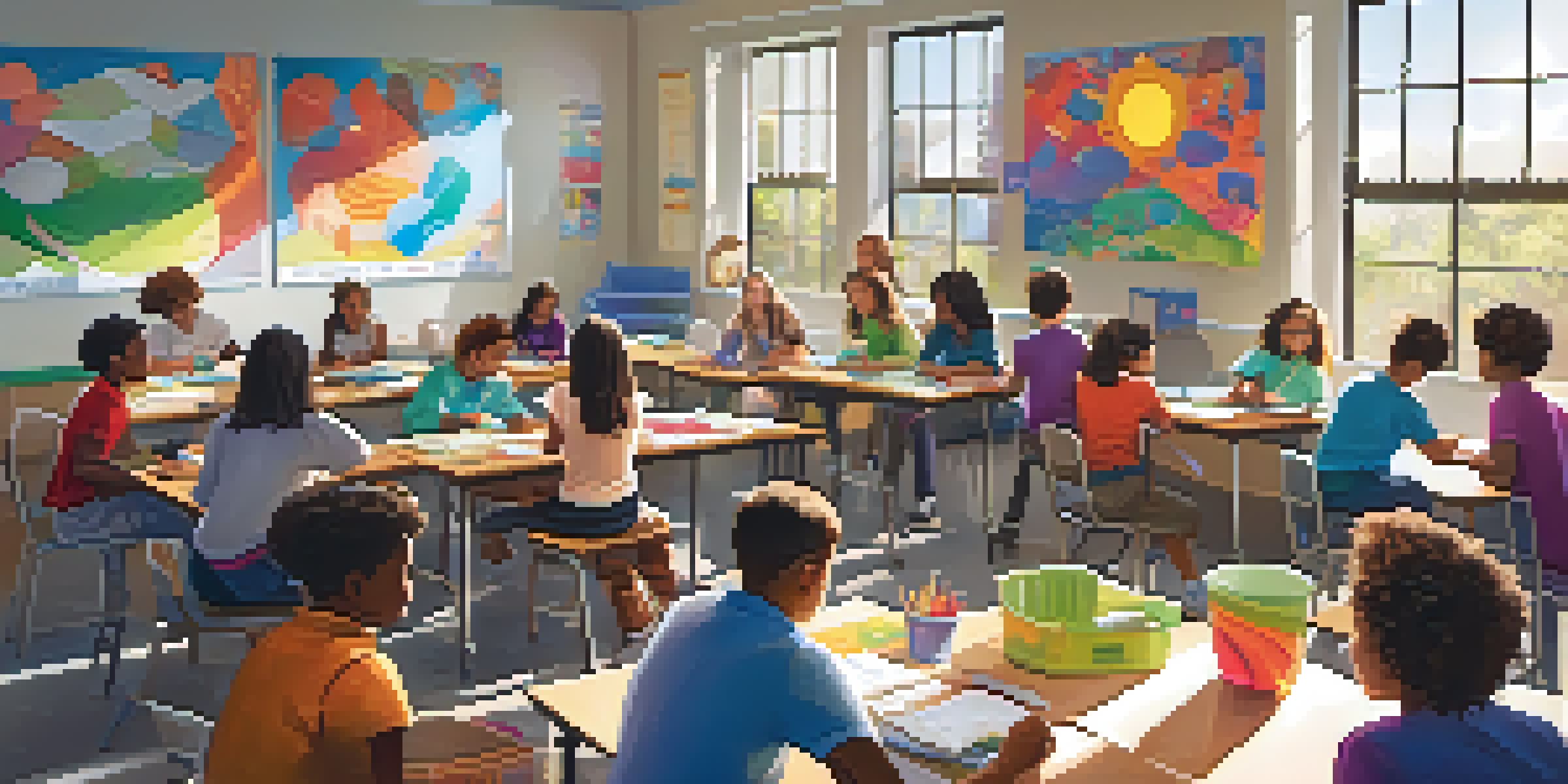Fostering Innovation Through Project-Based Learning

Understanding Project-Based Learning and Its Importance
Project-Based Learning (PBL) is an instructional approach where students engage in real-world challenges. This method contrasts with traditional teaching by promoting active learning and critical thinking. By immersing students in projects, PBL nurtures creativity and innovation, essential skills in today's fast-paced world.
Project-based learning gives students a chance to learn by doing, engaging their minds and imagination.
PBL encourages students to take charge of their learning, allowing them to explore topics that interest them deeply. This autonomy ignites passion and fosters a sense of ownership, leading to enhanced engagement. As students work on their projects, they often discover new interests, sparking innovative ideas.
Moreover, PBL mirrors the collaborative nature of most workplaces today. Students learn to communicate effectively, work in teams, and solve problems collaboratively. These experiences prepare them for future careers, instilling essential skills that are highly sought after by employers.
How PBL Encourages Creative Thinking
One of the most significant benefits of PBL is its ability to cultivate creative thinking. When students are faced with open-ended projects, they must brainstorm and evaluate various solutions. This process encourages divergent thinking, where multiple possibilities are explored rather than just a single correct answer.

For instance, in a science class, instead of memorizing facts about ecosystems, students might design a sustainable garden. This task requires them to think critically about their choices, assess environmental impacts, and innovate solutions to real-world problems. Such projects stimulate creativity and push students to think outside the box.
PBL Fosters Real-World Skills
Project-Based Learning equips students with essential skills like creativity, collaboration, and critical thinking, preparing them for future careers.
Additionally, PBL prompts students to embrace failure as a part of the learning process. When students encounter obstacles, they learn to pivot and adapt their strategies. This resilience is a crucial component of creativity, as it allows individuals to experiment and refine their ideas without the fear of making mistakes.
Building Collaboration and Communication Skills
Project-Based Learning emphasizes collaboration, as students often work in teams to complete projects. This cooperative environment helps students develop essential communication skills. They learn how to articulate their ideas clearly, listen to diverse perspectives, and negotiate solutions together.
The best way to predict the future is to create it.
For example, during a history project, students might create a documentary about a significant event. Each team member can take on specific roles—researcher, writer, or editor—requiring constant communication and coordination. Such experiences not only enhance their ability to work in groups but also prepare them for future professional environments.
Additionally, collaboration in PBL fosters empathy and understanding among students. Working closely with peers from varied backgrounds encourages them to appreciate different viewpoints and cultural experiences. This emotional intelligence is invaluable in today’s increasingly interconnected world.
Integrating Real-World Challenges into Learning
One of the standout features of PBL is its focus on real-world challenges. By connecting projects to genuine issues, students see the relevance of their learning. This approach not only enriches their educational experience but also motivates them to seek innovative solutions.
For instance, students might tackle local environmental issues by developing campaigns to reduce waste in their community. Engaging with real problems fosters a sense of purpose and urgency, driving students to think critically and creatively. They begin to view themselves as change-makers capable of impacting their surroundings.
Encourages Self-Directed Learning
Through PBL, students take initiative in their education, promoting a lifelong love of learning and developing important organizational skills.
Moreover, integrating real-world challenges cultivates a sense of civic responsibility. As students engage with their communities, they learn the importance of social and environmental stewardship. This awareness encourages them to innovate solutions that not only benefit themselves but also contribute positively to society.
Encouraging Self-Directed Learning in Students
PBL promotes self-directed learning, empowering students to take initiative in their education. Instead of relying solely on instructors for guidance, students learn to seek out resources, ask questions, and explore topics independently. This autonomy fosters a lifelong love of learning.
For example, when tasked with a project about renewable energy, students might research various energy sources and their impacts on the environment. This self-guided exploration encourages critical thinking and promotes curiosity, driving them to become proactive learners.
In addition, self-directed learning helps students develop essential time management and organizational skills. As they navigate project timelines and deliverables, they learn to prioritize tasks and set achievable goals. These skills are invaluable, not just in academic settings but also in their future careers.
Assessing Learning Outcomes in PBL
Assessment in PBL often goes beyond traditional tests, focusing on the process and products of student learning. Teachers use various methods to evaluate students, including self-assessments, peer reviews, and presentations. This holistic approach provides a more comprehensive picture of student understanding.
For instance, after completing a project on climate change, students might present their findings to the class and receive feedback from both peers and instructors. This not only reinforces their learning but also encourages them to reflect on their work critically. Such assessments help students identify strengths and areas for improvement.
Technology Enhances Learning Experience
Integrating technology into PBL provides students with tools for collaboration and allows them to share their work with a wider audience.
Moreover, incorporating diverse assessment methods fosters a growth mindset. When students see feedback as a tool for development rather than a judgment, they are more likely to embrace challenges and strive for innovation. This shift in perspective is essential for nurturing a culture of creativity.
The Role of Technology in Project-Based Learning
In today's digital age, technology plays a vital role in enhancing Project-Based Learning. It provides students with access to a wealth of information, tools, and platforms to collaborate and share their projects. Integrating technology can significantly enrich the learning experience.
For example, students can use online tools to create digital presentations or collaborate on projects from different locations. Platforms like Google Docs or Trello facilitate seamless communication and organization. This convenience not only makes projects more efficient but also prepares students for tech-savvy workplaces.

Additionally, technology enables students to showcase their projects to a broader audience. They can publish their findings on blogs or social media, receiving feedback from the community. This exposure not only boosts their confidence but also illustrates the real-world impact of their work.